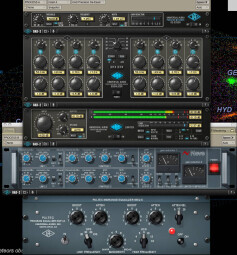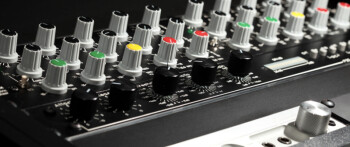In this third part of our Home Mastering series, we will write about the process to follow in order to make the right decisions at the right time.
Methodology
The tools you’ll need during a mastering session are pretty much the same as you would use for mixing. There are dynamics processors (compressor, limiter, expander, etc.), EQs, reverbs, stereo imaging tools, harmonic exciters, maximizers, analyzers of all types, and dither. As usual, there is no magic recipe regarding the order in which all these tools should be used. However, a setup that could be considered typical would be as follows:
- EQ 1
- Dynamics processing
- EQ 2
- Harmonic exciter
- Stereo processing
- Reverb
- Maximizer/limiter
- Dither
The fact that you have all these tools at your disposal doesn’t necessarily mean that you have to use them! Always remember: “If it ain’t broke, don’t fix it.” A healthy way to go about it can be summarized in six steps:
- Set a goal
- Identify the tool or tools that can help you achieve that goal
- Apply the solution you envisioned
- Put things into perspective and listen to whether the goal has been met
- Go to the next processing stage, if any
- Go back, if necessary
Another good practice when you are happy with the result is to ask yourself at what price you’ve achieved it. OK, so what you just did brings you something, but isn’t it at the expense of something else that is just as important? And, if that’s the case, is the compromise worth it?
By the way, if you find yourself applying relatively drastic measures during mastering, like applying more than 6dB of EQ, for example, it might be wise to question the original mix, even if it means going back to it.
Finally, pay special attention when you use processors such as exciters, maximizers and stereo EQs. The latter can affect your mix radically, to the point that they can negatively affect it without you being aware, due to auditory habituation (losing your perspective after listening to the same thing over and over). To avoid ugly surprises when you listen to your work with fresh ears the next day, make a habit of slightly decreasing your settings from those that you consider adequate.
In our first three articles (Part 1, Part 2) we have approached the subtle art of mastering from a somewhat general perspective. The upcoming articles will address, one by one, the usage of the different processing options available to achieve your goals. And we’ll start with an essential tool in our next article: EQ.
*Click here to view all installments of this multi-part series*




